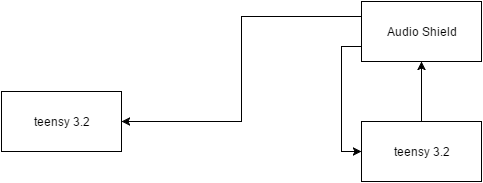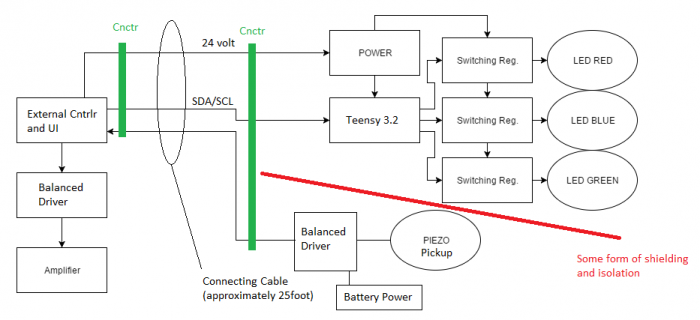Hey,
So I was wondering if it is easy to setup an external teensy 3.2 to listen to the audio shield's digital audio data while the audio shield is being controlled by another teensy 3.2. Illustration below. The external teensy 3.2 on the left just needs to listen to the audio data captured by the shield and reproduces the analog signal. I want to do this because the audio shield is taking in a piezo signal. The digital signal to the external teensy is separated by a 25 foot cable.

I think it will work (program the left teensy to accept a i2s input from a parallel tx line coming out of the shield), but I wanted to verify it can be done before I bought the parts
Thanks in advance.
So I was wondering if it is easy to setup an external teensy 3.2 to listen to the audio shield's digital audio data while the audio shield is being controlled by another teensy 3.2. Illustration below. The external teensy 3.2 on the left just needs to listen to the audio data captured by the shield and reproduces the analog signal. I want to do this because the audio shield is taking in a piezo signal. The digital signal to the external teensy is separated by a 25 foot cable.

I think it will work (program the left teensy to accept a i2s input from a parallel tx line coming out of the shield), but I wanted to verify it can be done before I bought the parts
Thanks in advance.


